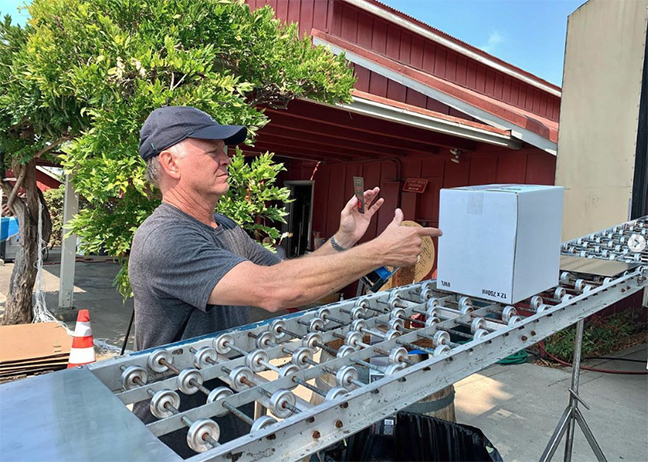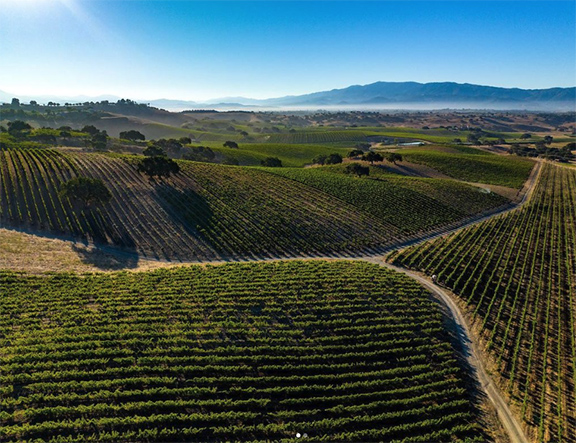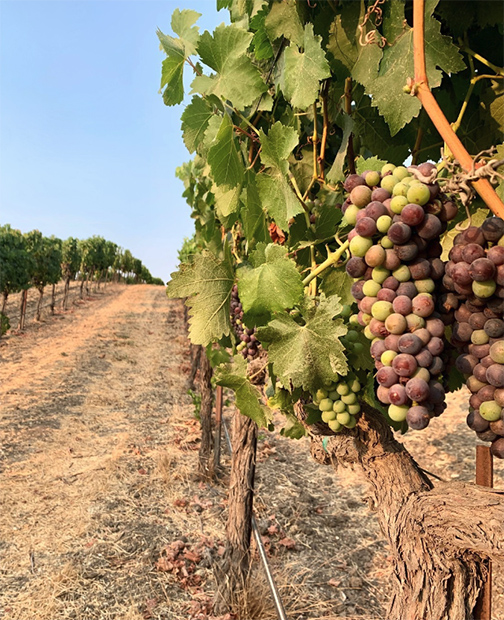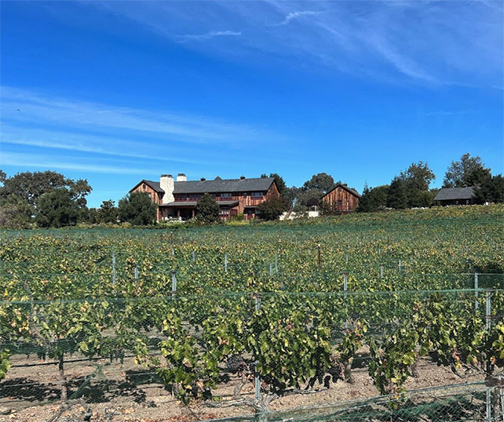The Santa Ynez Valley, nestled within Santa Barbara County, California, is renowned for its picturesque landscapes and flourishing wine industry. This region, often referred to as the Santa Ynez wine country, has gained prominence as a premier wine destination, offering a unique blend of scenic beauty and exceptional vineyards. The Santa Ynez wine region is home to several notable American Viticultural Areas (AVAs), including Santa Ynez Valley AVA, Sta. Rita Hills AVA, and Happy Canyon of Santa Barbara AVA. Each AVA contributes its own character to the wines produced, showcasing the region's terroir diversity.
Established in 1994 by Tom and Judy Beckmen, Beckmen Vineyards is one of the most highly distinguished estates in the Santa Ynez Valley. The winery has become a prominent player in the California wine scene, celebrated for its dedication to organic and biodynamic farming methods which reflect a profound respect for the land in the production of high-quality Rhône-style wines. The vineyards of Beckmen Winery span over 365 acres, primarily planted with varietals such as Syrah, Grenache, and Mourvèdre.
Beckmen Winery's commitment to sustainability extends beyond the vineyards and into the winemaking process. They prioritize energy efficiency, water conservation, and eco-friendly practices, showcasing a holistic approach to environmental responsibility. Through their dedication to crafting wines that reflect the unique terroir of the region, Beckmen Winery has earned its place among the distinguished wineries of California's Central Coast.
Grape Collective talks to Jeff Beckmen about the history of the estate, the grapes he cultivates, and biodynamic farming in the Santa Ynez Valley.
Christopher Barnes: So talk to us about the history of Beckmen.
 Jeff Beckmen: Sure. Beckmen Vineyards was started back in 1994. We started when my father went up to the Santa Ynez Valley for the weekend, and my mom was up there and thought it was a beautiful place. It was two hours from L.A. My dad had sold a business of his a couple of years ago and was looking for a second that he wanted to get into.
Jeff Beckmen: Sure. Beckmen Vineyards was started back in 1994. We started when my father went up to the Santa Ynez Valley for the weekend, and my mom was up there and thought it was a beautiful place. It was two hours from L.A. My dad had sold a business of his a couple of years ago and was looking for a second that he wanted to get into.
(Jeff Beckmen)
He had grown up on a farm in the Midwest and was always into farming and cattle and nature, and they happened upon this small vineyard that was for sale. And they really liked it and thought this would be a really unique thing to do. And at the time my dad was kind of looking around at a bunch of different things and he really thought that this Santa Ynez Valley, Santa Barbara area, was really an unappreciated area as far as winemaking goes.
Grapes were just really starting to get planted back in the early ‘90s in Santa Barbara, and it was mostly a lot of other crops being grown there at the time. But grapes pretty much became a dominant thing over there. He was ahead of his time, very much ahead of his time.
He was early, but he wasn't wrong. My brother came along with him to help start the winery. My brother was trained as an anthropologist, and had no real winemaking experience. So at the beginning we had a consultant who consulted us on the vineyards practices, and then we also had a winemaker who was there to teach my brother and my brother was learning from him.
My brother also made friends with a lot of the other winemakers in the area and really taught himself how to make some great wines. And within a few years of him kind of figuring it out, he was making better wines than the other winemaker, so clearly he was going to get the job since it's the family business.
But he's really got an amazing palate and has done an incredible job making wines. And he learned the agricultural part of it as well and has really been managing the vineyards and the winemaking process pretty much since day one.
Jeff, talk a little bit about the terroir in the Santa Ynez Valley.
 Sure. Well, there's no one terroir in the Santa Ynez Valley. We actually have two different vineyards that we farm in slightly different areas and actually with very different soils and terroirs to them.
Sure. Well, there's no one terroir in the Santa Ynez Valley. We actually have two different vineyards that we farm in slightly different areas and actually with very different soils and terroirs to them.
The first vineyard that we purchased in the early ‘90s is named after my parents. It's the Thomas and Judith Estate Vineyard, and that's located in the part of the Santa Ynez Valley called the Los Olivos District. That part of the valley, that particular vineyard, kind of sits more at the valley floor, kind of rolls a little bit. It's got some slope to the land, but it's certainly not hilly. It's got a very gravelly type of soil that drains very well. It's also quite a kind of warm location that kind of sits off the ocean by about 25 miles or so. So it gets a little bit warmer than some of the other parts of the valley.
The second vineyard that we own is called the Purisima Mountain Vineyard, and as the name implies, it basically goes up the side of a mountain. It's 125 acres. It goes up the side of a southwest facing slope. So it gets a lot of sun. Soil is very different from the soil in Los Olivos. It's got a very heavy soil. I've got a lot of clay, it's got a lot of chalk. It's a very dense soil. It retains water, moisture very well. And that sits on top of the layer of limestone, which is pretty rare in California. There's only a few spots in the Central Coast that have it. And we are lucky enough to have one of those spots.
And if you know anything about wine, you'll know that those limestone soils are found in, whether it's Burgundy or the Rhône Valley or Champagne or some of the most well known areas for producing just super concentrated wines. And what we try to do is really exploit that advantage, that terroir and use that to our advantage.
Explain a little bit about the geography of the Santa Ynez Valley.
It's a unique geography in California on the coastline of California, kind of makes a left turn out by Santa Barbara. So the valley opens up to the ocean. It runs west to east, and most of the valleys in California run north south. And the benefit of having an east west running valley is the fact that you really get a big coastal influence on your weather.
So every day we have this battle between this desert off to the east and this Pacific Ocean off to the west and 95% of the time, the cool weather dominates. So we have a super long growing season. We're typically picking our grapes anywhere from four to six weeks later than the rest of the state. And that's because we do get those really cool afternoons and evenings and nights that allow us to have such a great climate.
Talk about the grapes that you work with.
 Depending on the vineyard, we grow different types of grapes. So the larger vineyard, which is the Purisima Mountain Vineyard in Ballard Canyon, is really known as a Syrah vineyard. About two thirds of the vines on that property are Syrah. We also grow Grenache on that property, Mourvèdre there, drop a little bit of Cabernet, and then a grape called Counoise that we put into one of our blends.
Depending on the vineyard, we grow different types of grapes. So the larger vineyard, which is the Purisima Mountain Vineyard in Ballard Canyon, is really known as a Syrah vineyard. About two thirds of the vines on that property are Syrah. We also grow Grenache on that property, Mourvèdre there, drop a little bit of Cabernet, and then a grape called Counoise that we put into one of our blends.
We also grow all of our white wines on the mountain, so that would be Sauvignon Blanc, a little bit of Chardonnay, some Viognier and Grenache Blanc. The other property, which is in the Los Olivos District, is predominantly planted to Cabernet Sauvignon. The warmer climate there, the gravelly soil is really well suited to producing Cabernet. So that's predominantly what grows there, although there is a little bit of Syrah on that property, a little bit of Grenache on that property as well.
And talk a little bit about your philosophy of viticulture.
Sure. We are a firm believer in biodynamic farming. We started biodynamics working with biodynamics back in 2002, way before it was a thing and really the impetus was my brother. He was living on the Purisima Mountain Vineyard with his kids and his pets and he just didn't like the idea of spraying all those pesticides and herbicides and all these chemicals on something that we were ultimately going to ingest.
So he had been talking with a consultant out of France whose family had been doing biodynamic farming for generations, and he became convinced that he could actually do it. I was a big name concerned with the fact that you can do it over ten acres or 20 acres, but can you do it over 150 acres? And I think that they slowly worked together on building a plan for implementing it.
And we started in 2002, we did some and then we, you know, ‘03, ‘04, we kept expanding it to the entire property. And the vineyard became the first certified biodynamic vineyard in the Central Coast in 2008. And still have our certification. And I believe we're the fourth largest certified biodynamic vineyard in California. So something we take a lot of pride in is growing great fruit. And our job we consider more as wine growers than we do winemakers.
And do you feel the organics and biodynamics are making a bigger push in Central California?
I do. I think that there's a general movement towards that direction. I think there's a couple of reasons for it. Probably most important is the fact that the consumers are now starting to care much more about what they're putting into their body, how the food and beverages that they're consuming are made. And I think that is pushed into it.
I think, number two, the fact is that a lot of these people want to be good stewards of the land as well. And the big thing about biodynamics is that it's very much of a healing program. It's all about regeneration, building a healthy ecosystem and a healthy environment around which to grow grapes.
And it's definitely been as we've made that move, we noticed more and more people certainly moving towards whether it's sustainable agriculture or organic agriculture or in our case, biodynamic agriculture. There seems to be more people moving in that direction.
And then following up on that, what is your philosophy of winemaking?
 We call our winemaking process smart interventionist winemaking, meaning that we only want to intervene with the winemaking process when something's going wrong, when something is off. Our goal in making wine is we want to make the grape varietals taste correct. So we want our Cabernet to taste like Cabernet Sauvignon, but we also want it to taste like Cabernet Sauvignon that's grown in our vineyard and we want to leave those elements of terroir in it. And make it very notable for that.
We call our winemaking process smart interventionist winemaking, meaning that we only want to intervene with the winemaking process when something's going wrong, when something is off. Our goal in making wine is we want to make the grape varietals taste correct. So we want our Cabernet to taste like Cabernet Sauvignon, but we also want it to taste like Cabernet Sauvignon that's grown in our vineyard and we want to leave those elements of terroir in it. And make it very notable for that.
And you have a natural wine project that you've just launched.
We have a new label for us, it's called One Ingredient, and it is a wine that we started experimenting with a few years ago that we're making entirely by hand. So the idea behind making a natural wine was to not only not use any additives like sulfur or added yeast. We really kind of wanted to eliminate using our presses and anything that was in modern winemaking.
The impetus for the wine was my brother, he was over in northern Italy, tasting some wines made in amphora and he bought a couple of these amphora and had them shipped over and started making wine. So these wines are all extended skin contact wines where each amphora only makes about 45 or 50 cases of each wine. And we do it all by hand. But the result has been something that we're really pleased with and really excited about, really unique, interesting wines that people really enjoy.














